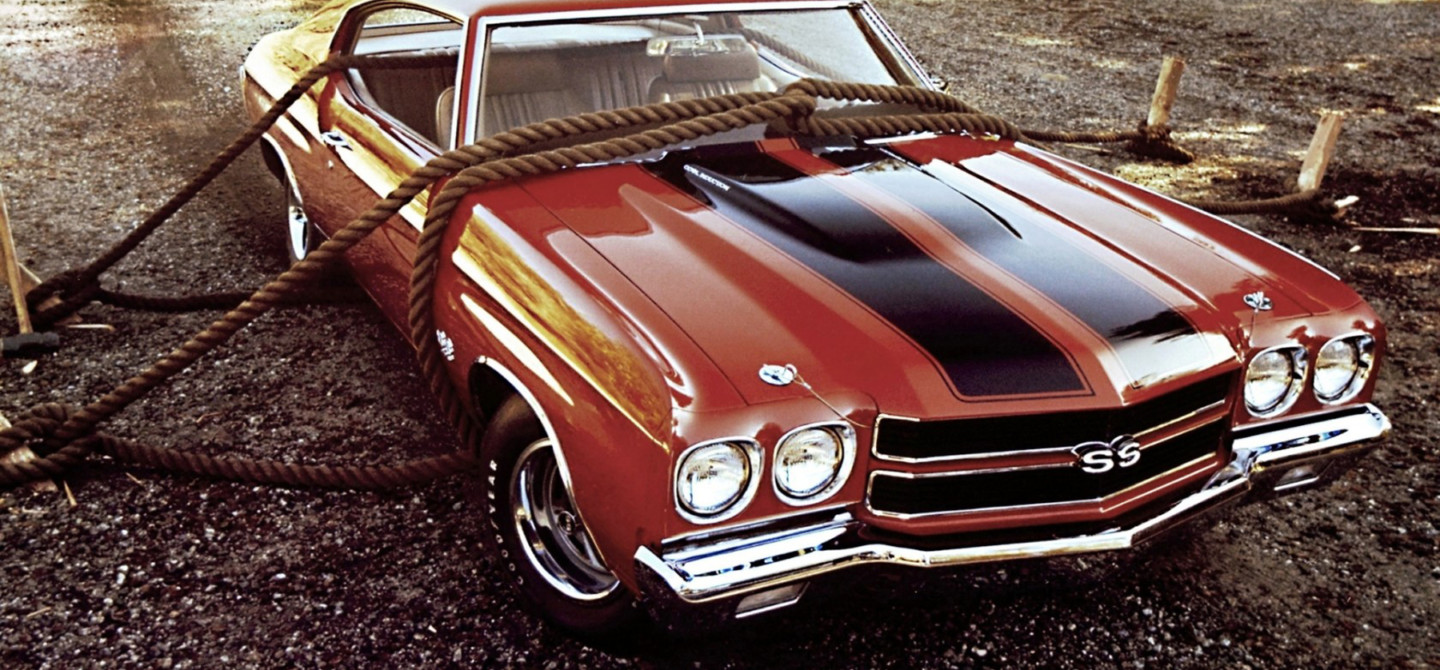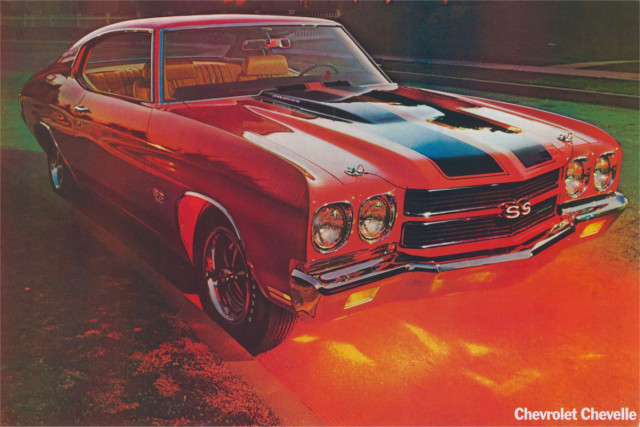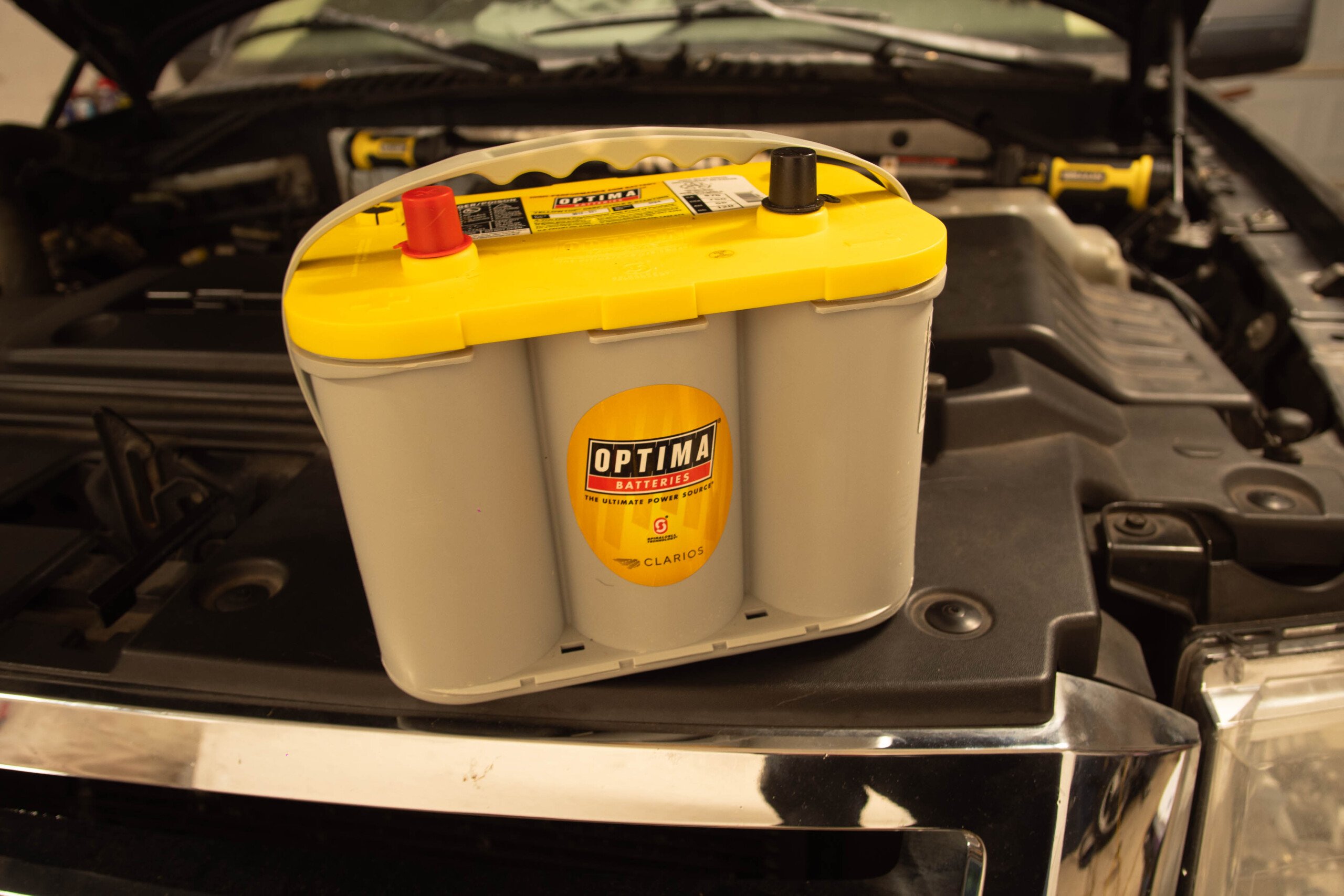For this week’s Throwback Thursday, I decided to do something a little different. Instead of showcasing an older article that you can use when working on your hot rods, I decided just to take this opportunity to just look back at a piece of automotive history. Being a little more descriptive, I thought looking at the high-water mark of the muscle car era — 1970 — seemed like a good idea.
Going back to the year 1970, we run into several “firsts” within Chevrolet Corporation. But before we get into what was new, let’s talk about what the old standards were doing. In 1970 the C10 pickup was the beneficiary of the new 350ci engine (introduced in 1969), and a redesign saw a noticeable change to the grille and the hood. At first glance, the 1969 and 1970 grilles appear identical, but the 1970s plastic inserts actually have highlights that break the appearance into six separate sections. The 396ci engine, while still sold as such, was enlarged to 402 cubic inches in 1970. Also new this year were upper and lower side moldings, which added the availability of another two-tone paint option. These were standard on CST trucks and optional on other trim levels.
When looking at the full-size line up for 1970, Chevrolet changed very little. The standard 250ci six-cylinder engine delivered 155hp, and the standard V8 in full-size Chevrolets was now the 250hp 350ci engine. Optional V8 engines included a 300hp 350ci engine, and 265hp 400ci engine. Topping the list was the 345hp 454ci engine. The Bel Air series was now a single model four-door sedan.
The Camaro was the recipient of a complete redesign. The second-generation Camaro was able to benefit from an increased budget that was justified by the success of the first generation. Although it was an all-new car, the basic mechanical layout of the new Camaro was familiar.
The base engines were the 155hp 250ci six-cylinder engine or the 200hp 307ci V8. The 250hp 350ci engine was also available as an option. SS could get the big block, and Z28 got a high-winding 302ci small block. Two 454ci engines (the LS6 and LS7) were listed on early paperwork but never made it into production vehicles.
The mid-sized Chevelle received some significant styling changes for 1970. The sheetmetal revisions gave the body a brand new look, following the Coke bottle styling of the day. The interior was also extensively redesigned. Chevrolet also introduced the 450hp LS6 454ci engine for use in the mid-sized car. While performance was paramount, looks had to be outstanding. That’s where the new twin stripes running over the hood and rear decklid on SS cars came into play.
A new arrival, late in 1970, was the all-new Vega. The media heralded Chevy’s little car as a great small car when it was first introduced on September 10, 1970, but the fanfare wouldn’t last long. It was introduced as being available as a low-priced sedan, a sporty wagon, and a panel delivery. In 1967, when the Vega was first proposed within GM, plans were for it to feature a rear-engine, much like the Corvair. The actual engine that was installed in the front of the car was a 2.3-liter four-cylinder, but unlike previous GM aluminum engines, the Vega’s block did not have steel cylinder liners.
Another all-new car in 1970 was the Monte Carlo. This was to be the Chevrolet counterpart to the Pontiac Grand Prix. Much of the body and structure were shared from the Chevelle (firewall, windshield, deck lid, and rear window were the same).
The standard powertrain was the 250hp 350ci Turbo-Fire small-block V8 with a two-barrel carburetor. Front disc brakes were standard equipment, and the base price was $3,123. This meant that the Monte Carlo cost $218 more than a comparable Chevelle Malibu. For those wanting more, the Monte Carlo SS 454 delivered. Priced at an additional $420, it included a standard 360hp 454ci engine with a four-barrel carburetor. It also included a heavy-duty suspension, wider tires, “SS 454” badging, and an automatic load-leveling rear suspension.
The year 1970 is heralded as the pinnacle of the muscle car era, and although many of the performance models delivered that year continued to thrill fans of Chevrolet for many years following. However, the thrill just wasn’t as powerful as it once was.






















